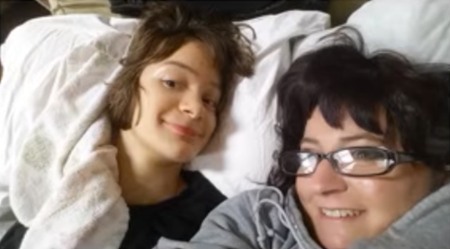Senior Project Makes a Difference

Engineers need to be creative and innovative so they can take a unique problem and provide solutions in new and interesting ways. Eighteen Mechanical and Manufacturing Engineering students got to experience firsthand what creativity and innovation in engineering can do, when they took up the challenge to design bite guards for a young woman with cerebral palsy. Lianna and Utawna resting after a recent dental operation.
Lianna and Utawna resting after a recent dental operation.
Here was the problem: this young woman, named Lianna, had been unable to stop biting her lip for over two years, which would cause swelling, bleeding, and pain for her. Her dentist and orthodontist tried several different approaches to creating bite guards for her, but all failed due to materials cracking or bending or adhesives failing.
“I had worn out everyone at the children’s hospital,” Utawna, Lianna’s mother, said, “and I had contacted people out of state. We needed a new set of eyes and a completely different perspective.”
At her wits end, Utawna, herself a Miami grad, contacted the College of Engineering and Computing to ask if there was anything that could be done to help her and her daughter. That’s where the MME students came in. The students were divided into four teams. It was a competitive project where all the teams get the same problem statement but they can approach it in different ways.
“Dentists know teeth,” Professor John Richter, who served as the advisor for the MME students during this project, “but we know forces, and loads, and materials.” This was a challenge best suited for engineers.
Three teams opted to create a traditional bite guard, that would prevent Lianna’s lip from going over her teeth. One team went a different route. Through observations of Lianna’s lip biting behaviors, they discovered that certain stimuli caused her to stop biting her lip. They designed a head and chin support system that invoked the stimuli without inhibiting her range of motion, so she could do all the things she wanted to do. This solution to the problem was extremely clever and unique, and Professor Richter said he thinks this device could be used to help other individuals with this problem as well.
Moving forward, Utawna brought the designs to Lianna’s dentist, and they have decided to move forward with building two of the bite guards to test on Lianna. We wish them the best!
By Paige Smith

